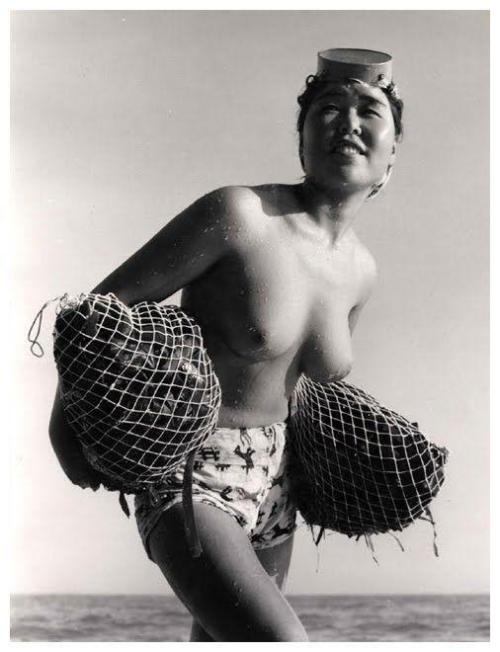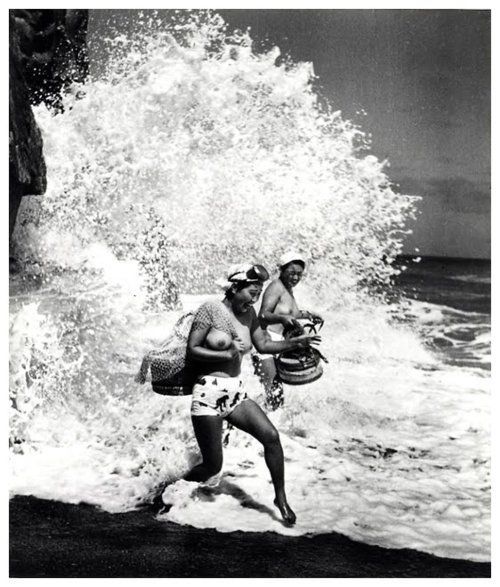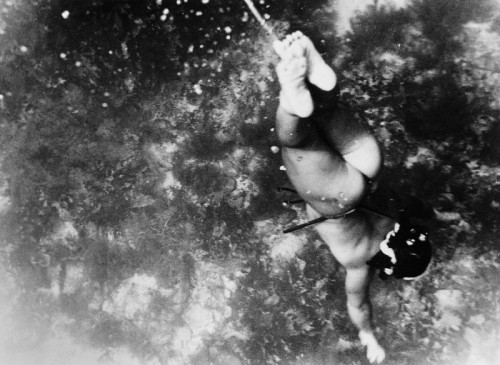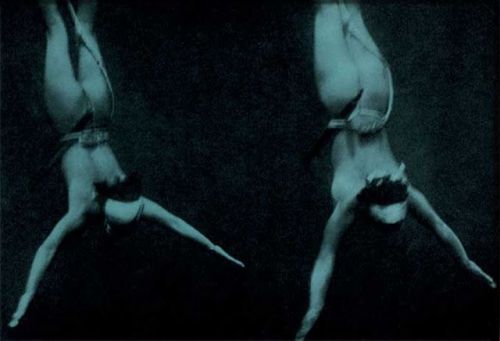11 New Facts Science Has Revealed About The Body

How many did you know? All worth reading more about!!
11 New Facts Science Has Revealed About The Body
1. Hundreds of genes spring to life after you die - and they keep functioning for up to four days.
2. Livers grow by almost half during waking hours.
3. The root cause of eczema has finally been identified.
4. We were wrong - the testes are connected to the immune system after all.
5. The causes of hair loss and greying are linked, and for the first time, scientists have identified the cells responsible.
6. A brand new human organ has been classified - the mesentery - an organ that’s been hiding in plain sight in our digestive system this whole time.
7. An unexpected new lung function has been found - they also play a key role in blood production, with the ability to produce more than 10 million platelets (tiny blood cells) per hour.
8. Your appendix might actually be serving an important biological function- and one that our species isn’t ready to give up just yet.
9. The brain literally starts eating itself when it doesn’t get enough sleep. brain to clear a huge amount of neurons and synaptic connections away.
10. Neuroscientists have discovered a whole new role for the brain’s cerebellum - it could actually play a key role in shaping human behaviour.
11. Our gut bacteria are messing with us in ways we could never have imagined. Neurodegenerative diseases like Parkinson’s might actually start out in the gut, rather than the brain, and there’s mounting evidence that the human microbiome could be to blame for chronic fatigue syndrome.
More Posts from Philosophical-amoeba and Others










The Last Japanese Mermaids
For nearly two thousand years, Japanese women living in coastal fishing villages made a remarkable livelihood hunting the ocean for oysters and abalone, a sea snail that produces pearls. They are known as Ama. The few women left still make their living by filling their lungs with air and diving for long periods of time deep into the Pacific ocean, with nothing more than a mask and flippers.
In the mid 20th century, Iwase Yoshiyuki returned to the fishing village where he grew up and photographed these women when the unusual profession was still very much alive. After graduating from law school, Yoshiyuki had been given an early Kodak camera and found himself drawn to the ancient tradition of the ama divers in his hometown. His photographs are thought to be the only comprehensive documentation of the near-extinct tradition in existence

This is what happens when a carrot is fired at 300 km/hour at an egg, through two sheets of cardboard.
This is what happens if you separate out the two sheets:

The egg survives! This shows how a Whipple shield works, and is what spacecraft use to protect themselves from micrometeoroid impacts in space. When the projectile (in this case a carrot, but in space it could be a speck of paint, a piece of an old satellite, or a bit of space rock) hits the first layer, it’s moving so fast that it starts to vaporise, because the energy of the collision is enough to break almost every bond in the substance.
It then sprays outwards, spreading the force of impact across a much wider area, meaning the second layer can stop it going any further, keeping your egg (or astronauts) safe.
Watch the full video on our YouTube channel.
The Okinawan Language
Anybody who has studied Japanese and Linguistics will know that Japanese is a part of the Japonic language family. For many years it was thought that Japanese was a language isolate, unrelated to any other language (Although there is some debate as to whether or not Japanese and Korean are related). Today, most linguists are in agreement that Japanese is not an isolate. The Japonic languages are split into two groups: Japanese (日本語) and its dialects, which range from standard Eastern Japanese (東日本方言) to the various dialects found on Kyūshū (九州日本方言), which are, different, to say the least. The Ryukyuan Languages (琉球語派). Which are further subdivided into Northern and Southern Ryukyuan languages. Okinawan is classified as a Northern Ryukyuan Languages. There are a total of 6 Ryukyuan languages, each with its own dialects. The Ryukyuan languages exist on a continuum, somebody who speaks Okinawan will have a more difficult time understanding the Yonaguni Language, which is spoken on Japan’s southernmost populated island. Japanese and Okinawan (I am using the Naha dialect of Okinawan because it was the standard language of the Ryukyu Kingdom), are not intelligible. Calling Okinawan a dialect of Japanese is akin to calling Dutch a dialect of English. It is demonstrably false. Furthermore, there is an actual Okinawan dialect of Japanese, which borrows elements from the Okinawan language and infuses it with Japanese. So, where did the Ryukyuan languages come from? This is a question that goes hand in hand with theories about where Ryukyuan people come from. George Kerr, author of Okinawan: The History of an Island People (An old book, but necessary read if you’re interested in Okinawa), theorised that Ryukyuans and Japanese split from the same population, with one group going east to Japan from Korea, whilst the other traveled south to the Ryukyu Islands. “In the language of the Okinawan country people today the north is referred to as nishi, which Iha Fuyu (An Okinawn scholar) derives from inishi (’the past’ or ‘behind’), whereas the Japanese speak of the west as nishi. Iha suggests that in both instances there is preserved an immemorial sense of the direction from which migration took place into the sea islands.” (For those curious, the Okinawan word for ‘west’ is いり [iri]). But, it must be stated that there are multiple theories as to where Ryukyuan and Japanese people came from, some say South-East Asia, some say North Asia, via Korea, some say that it is a mixture of the two. However, this post is solely about language, and whilst the relation between nishi in both languages is intriguing, it is hardly conclusive. With that said, the notion that Proto-Japonic was spoken by migrants from southern Korea is somewhat supported by a number of toponyms that may be of Gaya origin (Or of earlier, unattested origins). However, it also must be said, that such links were used to justify Japanese imperialism in Korea. Yeah, when it comes to Japan and Korea, and their origins, it’s a minefield. What we do know is that a Proto-Japonic language was spoken around Kyūshū, and that it gradually spread throughout Japan and the Ryukyu Islands. The question of when this happened is debatable. Some scholars say between the 2nd and 6th century, others say between the 8th and 9th centuries. The crucial issue here, is the period in which proto-Ryukyuan separated from mainland Japanese. “The crucial issue here is that the period during which the proto-Ryukyuan separated(in terms of historical linguistics) from other Japonic languages do not necessarily coincide with the period during which the proto-Ryukyuan speakers actually settled on the Ryūkyū Islands.That is, it is possible that the proto-Ryukyuan was spoken on south Kyūshū for some time and the proto-Ryukyuan speakers then moved southward to arrive eventually in the Ryūkyū Islands.” This is a theory supported by Iha Fuyu who claimed that the first settlers on Amami were fishermen from Kyūshū. This opens up two possibilities, the first is that ‘Proto-Ryukyuan’ split from ‘Proto-Japonic’, the other is that it split from ‘Old-Japanese’. As we’ll see further, Okinawan actually shares many features with Old Japanese, although these features may have existed before Old-Japanese was spoken. So, what does Okinawan look like? Well, to speakers of Japanese it is recognisable in a few ways. The sentence structure is essentially the same, with a focus on particles, pitch accent, and a subject-object-verb word order. Like Old Japanese, there is a distinction between the terminal form ( 終止形 ) and the attributive form ( 連体形 ). Okinawan also maintains the nominative function of nu ぬ (Japanese: no の). It also retains the sounds ‘wi’ ‘we’ and ‘wo’, which don’t exist in Japanese anymore. Other sounds that don’t exist in Japanese include ‘fa’ ‘fe’ ‘fi’ ‘tu’ and ‘ti’. Some very basic words include: はいさい (Hello, still used in Okinawan Japanese) にふぇーでーびる (Thank you) うちなー (Okinawa) 沖縄口 (Uchinaa-guchi is the word for Okinawan) めんそーれー (Welcome) やまとぅ (Japan, a cognate of やまと, the poetic name for ‘Japan’) Lots of Okinawan can be translated into Japanese word for word. For example, a simple sentence, “Let’s go by bus” バスで行こう (I know, I’m being a little informal haha!) バスっし行ちゃびら (Basu sshi ichabira). As you can see, both sentences are structured the same way. Both have the same loanword for ‘bus’, and both have a particle used to indicate the means by which something is achieved, ‘で’ in Japanese, is ‘っし’ in Okinawan. Another example sentence, “My Japanese isn’t as good as his” 彼より日本語が上手ではない (Kare yori nihon-go ga jouzu dewanai). 彼やか大和口ぬ上手やあらん (Ari yaka yamatu-guchi nu jooji yaaran). Again, they are structured the same way (One important thing to remember about Okinawan romanisation is that long vowels are represented with ‘oo’ ‘aa’ etc. ‘oo’ is pronounced the same as ‘ou’). Of course, this doesn’t work all of the time, if you want to say, “I wrote the letter in Okinawan” 沖縄語で手紙を書いた (Okinawa-go de tegami wo kaita). 沖縄口さーに手紙書ちゃん (Uchinaa-guchi saani tigami kachan). For one, さーに is an alternate version of っし, but, that isn’t the only thing. Okinawan doesn’t have a direct object particle (を in Japanese). In older literary works it was ゆ, but it no longer used in casual speech. Introducing yourself in Okinawan is interesting for a few reasons as well. Let’s say you were introducing yourself to a group. In Japanese you’d say みんなさこんにちは私はフィリクスです (Minna-san konnichiwa watashi ha Felixdesu) ぐすよー我んねーフィリクスでぃいちょいびーん (Gusuyoo wan’nee Felix di ichoibiin). Okinawan has a single word for saying ‘hello’ to a group. It also showcases the topic marker for names and other proper nouns. In Japanese there is only 1, は but Okinawan has 5! や, あー, えー, おー, のー! So, how do you know which to use? Well, there is a rule, typically the particle fuses with short vowels, a → aa, i → ee, u → oo, e → ee, o → oo, n → noo. Of course, the Okinawan pronoun 我ん, is a terrible example, because it is irregular, becoming 我んねー instead of 我んのー or 我んや. Yes. Like Japanese, there are numerous irregularities to pull your hair out over! I hope that this has been interesting for those who have bothered to go through the entire thing. It is important to discuss these languages because most Ryukyuan languages are either ‘definitely’ or ‘critically’ endangered. Mostly due to Japanese assimilation policies from the Meiji period onward, and World War 2. The people of Okinawa are a separate ethnic group, with their own culture, history, poems, songs, dances and languages. It would be a shame to lose something that helps to define a group of people like language does. I may or may not look in the Kyūshū dialects of Japanese next time. I’unno, I just find them interesting.

Liu Chuyu was the first-born daughter of Emperor Xiaowu and his empress, during the Liu Song dynasty. Never heard of it? Neither had I. Lasting just 60 years in the 400s CE, it was one of the four southern kingdoms which succeeded the Eastern Jin Empire. While it was going, the Liu Song dynasty ruled most of southern China, but a string of incompetent or tyrannical emperors led to internal instability and the dynasty’s quick downfall.
Luckily for her, Liu Chuyu was born during a relatively stable period. Her father became Emperor Xiaowu by force, but his reign was more or less stable, and he died of natural causes when she was 17 or 18. The transition of power was bloodless and his son, Liu Chuyu’s younger brother, followed Emperor Xiaowu upon the throne.
Before he died, her father married her to He Ji, son of a prominent official. Liu Chuyu doesn’t seem to have been so happy about this. History records that when her brother left the palace she would often go to see him. One of those visits, Liu Chuyu said to him “While our genders are different, we are born of the same father. However, you have more than 10,000 women in your palaces, and I only have one husband, and this is unfair.” In response, her younger brother selected 30 young handsome men for her to keep. (Doesn’t it sound weird when put like that?) Liu Chuyu … enjoyed… them for a year before her brother was assassinated. Her uncle took the throne, denounced Liu Chuyu for her immorality, and ordered her to commit suicide. No more male harems for princesses.

Southeast Asia before ASEAN: An ASEAN 50 Commemorative Post
Ironically, the region of Southeast Asia was not an Asian concept. It was a Western one. It was perceived primarily through Western eyes as maps were created during the colonial rush to Asia from the 16th to the early 20th century. Hence, it originated as a geographical concept, having been rendered in different words by Western scholarship, especially before the Second World War– words such as “south east Asia”, “southeast Asia” or “south-east Asia.” In the 1930s for example, Southeast Asia was referred to as “Further India” (as if to allude that it’s near the Bay of Bengal, when it is not) or “Asia of the Monsoons” (to refer to the typhoons that frequently ravage the area.” The regional name’s gradual standardization (no longer in the lowercase “southeast”) and the dropping of the hyphen resulted in the name “Southeast Asia.” It was first used and asserted by the Americans, with its U.S. State Department’s “division of Southeast Asian Affairs” and came to be used frequently by the media as the Second World War sparked in the Pacific in 1941.
After the war, the term “Southeast Asia” transformed from a geographic entity to be referred to, to a complex and inchoate group of nations trying to redefine themselves in the world. As each one dropped their colonial fetters and became independent–Indonesia from the Dutch (17 August 1945), Vietnam from the British (2 September 1945), the Philippines from the United States (4 July 1946), Myanmar from the British (4 January 1948), Laos (22 October 1953) and Cambodia (9 November 1953) from the French, Singapore and Malaysia from the British (16 September 1956), Brunei from the British (1 January 1984), with Thailand successfully retaining its sovereignty, each one has tried to redefine their identities apart from their colonial past. With ideological conflicts in parts of Asia, a Southeast Asian integration seems far off.

*Front page of the Southeast Asia Collective Defense Treaty, 8 September 1954, from the Archives New Zealand. The first attempt at a Southeast Asian cooperation was done in 1954. The United States initiated an alliance that was meant to contain Communism in Asia, and hence, on 8 September 1954, the Southeast Asia Collective Defense Treaty (or the Manila Pact) was signed by only two Southeast Asian countries–the Philippines and Thailand–and joined by the United States, France, Great Britain, New Zealand, Australia, Thailand, and Pakistan. This established the Southeast Asian Treaty Organization or SEATO, where all member countries agree that if any one of them were attacked, all the other member countries would come to its defense–very similar to the North Atlantic Treaty Organization (NATO). But SEATO would end as a failure, for the simple reason that it was seen suspiciously by the rest of Southeast Asia as “a fig leaf for the nakedness of American policy.” Pakistan withdrew in 1972, and France in 1975.

*Philippine President Macapagal, Indonesian President Sukarno and Malaysian Prime Minister Tunku Abdul Rahman signing agreements forming the MaPhiLindo on 5 August 1963 at the Juan Luna Hall of the Department of Foreign Affairs in Manila, from the Malacañang Presidential Museum and Library.

*The Philippine Commonwealth Government-in-Exile proposed a union with Indonesia in 1943, a Pan-Malayan principle reflected in this part of an American 1942 map entitled “Outline of the Post-War New World Map,” a proposed political boundary map at the event that the Allied forces would win World War II. The one marked in blue are the proposed American protectorates of the post-war world.
At almost the same time, another effort was put in at the time of President Diosdado Macapagal. Coming from our commonality as Malays (with the vision of the late President Manuel L. Quezon for a Pan-Malayan nationhood), President Macapagal envisioned a cooperation with other Malay countries. Hence, Macapagal convened a summit in Manila, together with Malaysian Prime Minister Tunku Abdul Rahman and Indonesian President Sukarno, where they signed the Manila Accord on 5 August 1963, addressing controversial issues over North Borneo and Sarawak joining the Federation of Malaysia. The Accord established the Maphilindo, striving for “Asian solutions by Asian nations for Asian problems.” However, this was also seen as a move by the Philippines and Indonesia to stall or halt the formation of the Federation of Malaysia, which eventually happened on 16 September 1963. Indonesia pulled out of the organization, in reaction to Malaysia’s formation which was seen by Indonesia as a threat to its sovereignty, hence the org’s dissolution.

*The five “Founding Fathers” of the ASEAN, signing the Bangkok Declaration, also known as the ASEAN Declaration, on 8 August 1967. From the ASEAN Archive.
This explains the tensed environment that the five Foreign Ministers of Southeast Asia found themselves in on 8 August 1967 in the Thai Department of Foreign Affairs in Bangkok, Thailand. Carefully, and diplomatically, these representatives from Indonesia (Adam Malik), Malaysia (Tun Abdul Razak), Singapore (S. Rajaratnam), Philippines (Narciso Ramos) and Thailand (Thanat Khoman), sat down together, chose their words carefully, patiently wrestled on their issues through dialogue, and bravely met on common ground. It entailed a larger vision, one that did not only concern each of their nation’s concerns, but one that gave space to regional unity in spite of their differences. Rajaratnam said to his counterparts on that day:
We must think not only of our national interests but posit them against regional interests: that is a new way of thinking about our problems. And these are two different things and sometimes they can conflict. Secondly, we must also accept the fact, if we are really serious about it, that regional existence means painful adjustments to those practices and thinking in our respective countries. We must make these painful and difficult adjustments. If we are not going to do that, then regionalism remains a utopia.
“Painful adjustments” indeed. After all was said and done, the five Foreign Ministers, representing their heads of state, after months of negotiations and compromise, finally and unequivocally signed the two-page ASEAN Declaration, establishing the Association of Southeast Asian Nations, and committing themselves to resolving disputes by peaceful means and through hard but committed mutual accommodation. Bereft of the colonial baggages of the previous southeast asian intergovernmental organizations, it was Southeast Asian, from the inception of the idea to its founding.
The founding of the ASEAN in 1967 led to the diplomatic reconciliation between Malaysia and Indonesia, and Malaysia and Singapore. And while a year later, Malaysia temporarily severed its diplomatic relations with the Philippines due to claims over Sabah, this kind of issues never impeded the commitment the two nations have in ASEAN, so was with the other member-states with similar problems. Since then, ASEAN has grown into a 10-member-state organization. This probably explains why ASEAN is “the most successful inter-governmental organization in the developing world today.”
In the occasion of the Philippine Chairmanship of the ASEAN and its 50th founding anniversary, Happy ASEAN 50th!

*Banner from ASEAN 50 Facebook.
*Post-script: The deafening silence of the Philippines with its unprecedented win in the arbitration ruling in the ASEAN meetings ought to make people question our foreign policy. Insisting on our sovereign rights over our EEZ does not mean war-mongering. Vietnam, on the other hand, the nation that defeated the United States in the Vietnam War, still insists the rule of law thus challenging Chinese encroachment diplomatically. It exemplifies a fair and “independent foreign policy.” The Philippines should follow Vietnam’s example.
*Map above: “South-east Asia” map made by Polish Army Topography Service as featured in Pergamon World Atlas in 1967, the year ASEAN was founded. From the David Rumsey Historical Map Collection.
Follow me on Facebook at facebook.com/indiohistorian

Man with quadriplegia employs injury bridging technologies to move again—just by thinking
First recipient of implanted brain-recording and muscle-stimulating systems reanimates limb that had been stilled for eight years
Bill Kochevar grabbed a mug of water, drew it to his lips and drank through the straw.
His motions were slow and deliberate, but then Kochevar hadn’t moved his right arm or hand for eight years.
And it took some practice to reach and grasp just by thinking about it.
Kochevar, who was paralyzed below his shoulders in a bicycling accident, is believed to be the first person with quadriplegia in the world to have arm and hand movements restored with the help of two temporarily implanted technologies.
A brain-computer interface with recording electrodes under his skull, and a functional electrical stimulation (FES) system* activating his arm and hand, reconnect his brain to paralyzed muscles.
Holding a makeshift handle pierced through a dry sponge, Kochevar scratched the side of his nose with the sponge. He scooped forkfuls of mashed potatoes from a bowl—perhaps his top goal—and savored each mouthful.
“For somebody who’s been injured eight years and couldn’t move, being able to move just that little bit is awesome to me,” said Kochevar, 56, of Cleveland. “It’s better than I thought it would be.”
Kochevar is the focal point of research led by Case Western Reserve University, the Cleveland Functional Electrical Stimulation (FES) Center at the Louis Stokes Cleveland VA Medical Center and University Hospitals Cleveland Medical Center (UH). A study of the work was published in the The Lancet March 28 at 6:30 p.m. U.S. Eastern time.
“He’s really breaking ground for the spinal cord injury community,” said Bob Kirsch, chair of Case Western Reserve’s Department of Biomedical Engineering, executive director of the FES Center and principal investigator (PI) and senior author of the research. “This is a major step toward restoring some independence.”
When asked, people with quadriplegia say their first priority is to scratch an itch, feed themselves or perform other simple functions with their arm and hand, instead of relying on caregivers.
“By taking the brain signals generated when Bill attempts to move, and using them to control the stimulation of his arm and hand, he was able to perform personal functions that were important to him,” said Bolu Ajiboye, assistant professor of biomedical engineering and lead study author.
Technology and training
The research with Kochevar is part of the ongoing BrainGate2* pilot clinical trial being conducted by a consortium of academic and VA institutions assessing the safety and feasibility of the implanted brain-computer interface (BCI) system in people with paralysis. Other investigational BrainGate research has shown that people with paralysis can control a cursor on a computer screen or a robotic arm (braingate.org).
“Every day, most of us take for granted that when we will to move, we can move any part of our body with precision and control in multiple directions and those with traumatic spinal cord injury or any other form of paralysis cannot,” said Benjamin Walter, associate professor of neurology at Case Western Reserve School of Medicine, clinical PI of the Cleveland BrainGate2 trial and medical director of the Deep Brain Stimulation Program at UH Cleveland Medical Center.
“The ultimate hope of any of these individuals is to restore this function,” Walter said. “By restoring the communication of the will to move from the brain directly to the body this work will hopefully begin to restore the hope of millions of paralyzed individuals that someday they will be able to move freely again.”
Jonathan Miller, assistant professor of neurosurgery at Case Western Reserve School of Medicine and director of the Functional and Restorative Neurosurgery Center at UH, led a team of surgeons who implanted two 96-channel electrode arrays—each about the size of a baby aspirin—in Kochevar’s motor cortex, on the surface of the brain.
The arrays record brain signals created when Kochevar imagines movement of his own arm and hand. The brain-computer interface extracts information from the brain signals about what movements he intends to make, then passes the information to command the electrical stimulation system.
To prepare him to use his arm again, Kochevar first learned how to use his brain signals to move a virtual-reality arm on a computer screen.
“He was able to do it within a few minutes,” Kirsch said. “The code was still in his brain.”
As Kochevar’s ability to move the virtual arm improved through four months of training, the researchers believed he would be capable of controlling his own arm and hand.
Miller then led a team that implanted the FES systems’ 36 electrodes that animate muscles in the upper and lower arm.
The BCI decodes the recorded brain signals into the intended movement command, which is then converted by the FES system into patterns of electrical pulses.
The pulses sent through the FES electrodes trigger the muscles controlling Kochevar’s hand, wrist, arm, elbow and shoulder. To overcome gravity that would otherwise prevent him from raising his arm and reaching, Kochevar uses a mobile arm support, which is also under his brain’s control.
New Capabilities
Eight years of muscle atrophy required rehabilitation. The researchers exercised Kochevar’s arm and hand with cyclical electrical stimulation patterns. Over 45 weeks, his strength, range of motion and endurance improved. As he practiced movements, the researchers adjusted stimulation patterns to further his abilities.
Kochevar can make each joint in his right arm move individually. Or, just by thinking about a task such as feeding himself or getting a drink, the muscles are activated in a coordinated fashion.
When asked to describe how he commanded the arm movements, Kochevar told investigators, “I’m making it move without having to really concentrate hard at it…I just think ‘out’…and it goes.”
Kocehvar is fitted with temporarily implanted FES technology that has a track record of reliable use in people. The BCI and FES system together represent early feasibility that gives the research team insights into the potential future benefit of the combined system.
Advances needed to make the combined technology usable outside of a lab are not far from reality, the researchers say. Work is underway to make the brain implant wireless, and the investigators are improving decoding and stimulation patterns needed to make movements more precise. Fully implantable FES systems have already been developed and are also being tested in separate clinical research.
Kochevar welcomes new technology—even if it requires more surgery—that will enable him to move better. “This won’t replace caregivers,” he said. “But, in the long term, people will be able, in a limited way, to do more for themselves.”
The investigational BrainGate technology was initially developed in the Brown University laboratory of John Donoghue, now the founding director of the Wyss Center for Bio and Neuroengineering in Geneva, Switzerland. The implanted recording electrodes are known as the Utah array, originally designed by Richard Normann, Emeritus Distinguished Professor of Bioengineering at the University of Utah.
The report in Lancet is the result of a long-running collaboration between Kirsch, Ajiboye and the multi-institutional BrainGate consortium. Leigh Hochberg, a neurologist and neuroengineer at Massachusetts General Hospital, Brown University and the VA RR&D Center for Neurorestoration and Neurotechnology in Providence, Rhode Island, directs the pilot clinical trial of the BrainGate system and is a study co-author.
“It’s been so inspiring to watch Mr. Kochevar move his own arm and hand just by thinking about it,” Hochberg said. “As an extraordinary participant in this research, he’s teaching us how to design a new generation of neurotechnologies that we all hope will one day restore mobility and independence for people with paralysis.”
Word of the Day: potlatch
n. An opulent ceremonial feast (among certain North American Indian peoples of the north-west coast) at which possessions are given away or destroyed to display wealth or enhance prestige

Image: “Klallam people at Port Townsend” by James Gilchrist Swan. Public Domain via Wikimedia Commons
Neutrinos Hint of Matter-Antimatter Rift

the same underground observatory in Japan where, 18 years ago, neutrinos were first seen oscillating from one “flavor” to another — a landmark discovery that earned two physicists the 2015 Nobel Prize — a tiny anomaly has begun to surface in the neutrinos’ oscillations that could herald an answer to one of the biggest mysteries in physics: why matter dominates over antimatter in the universe.
The anomaly, detected by the T2K experiment, is not yet pronounced enough to be sure of, but it and the findings of two related experiments “are all pointing in the same direction,” said Hirohisa Tanaka of the University of Toronto, a member of the T2K team who presented the result to a packed audience in London earlier this month.
“A full proof will take more time,” said Werner Rodejohann, a neutrino specialist at the Max Planck Institute for Nuclear Physics in Heidelberg who was not involved in the experiments, “but my and many others’ feeling is that there is something real here.”
The long-standing puzzle to be solved is why we and everything we see is matter-made. More to the point, why does anything — matter or antimatter — exist at all? The reigning laws of particle physics, known as the Standard Model, treat matter and antimatter nearly equivalently, respecting (with one known exception) so-called charge-parity, or “CP,” symmetry: For every particle decay that produces, say, a negatively charged electron, the mirror-image decay yielding a positively charged antielectron occurs at the same rate. But this cannot be the whole story. If equal amounts of matter and antimatter were produced during the Big Bang, equal amounts should have existed shortly thereafter. And since matter and antimatter annihilate upon contact, such a situation would have led to the wholesale destruction of both, resulting in an empty cosmos.
Somehow, significantly more matter than antimatter must have been created, such that a matter surplus survived the annihilation and now holds sway. The question is, what CP-violating process beyond the Standard Model favored the production of matter over antimatter?
Many physicists suspect that the answer lies with neutrinos — ultra-elusive, omnipresent particles that pass unfelt through your body by the trillions each second.
To that end, starting in 2010, scientists with the T2K experiment generated beams of neutrinos or antineutrinos in Tokai, Japan, and aimed them toward the Super-Kamiokande neutrino observatory, a sensor-lined tank of 50,000 tons of pure water located nearly 200 miles away in Kamioka. Occasionally, these ghostly particles interacted with atoms inside the water tank, generating detectable flashes of radiation. Detecting a difference in the behavior of the neutrinos and antineutrinos would provide an important clue about the preponderance of matter over antimatter, perhaps opening up a route beyond the Standard Model to a more complete theory of nature. Already, the strange properties of neutrinos provide a possible outline of that fuller story.

Kamioka Observatory, ICRR (Institute for Cosmic Ray Research), The University of Tokyo At the Super-Kamiokande observatory in Kamioka, Japan — shown here when it was being filled with water in 2006 — neutrinos interact with atoms inside the water, generating flashes of radiation that are picked up by the surrounding sensors.
Primordial Neutrinos
The 1998 discovery that neutrinos switch flavors on the fly “may change our most fundamental theories,” President Bill Clinton said at the time, “from the nature of the smallest subatomic particles to how the universe itself works.”
Neutrino oscillations defied the Standard Model’s prediction that the particles are massless, like photons. In order for neutrinos to oscillate, each of their three possible flavors (electron, muon and tau) must be a quantum-mechanical mixture, or “superposition,” of three possible masses. Quantum superpositions evolve over time. So a neutrino might start out with its three mass components giving it pure muon flavor, but as the components evolve at different rates, electron flavor gradually enters the mixture, and the neutrino will have some probability of being measured as an electron neutrino.
There’s no mechanism within the Standard Model by which neutrinos might acquire their tiny, nonzero masses. Also unknown is why all neutrinos are observed to be “left-handed,” spinning clockwise with respect to their direction of motion, while all antineutrinos are right-handed, spinning counterclockwise.
Experts overwhelmingly favor a double-duty explanation of neutrino mass and single-handedness called the “seesaw mechanism,” whereby the known, lightweight, left-handed neutrinos have much heavier right-handed counterparts, and the known antineutrinos likewise have superheavy left-handed counterparts (the light and heavy masses are inversely related, like two sides of a seesaw). For this seesaw explanation to work, the neutrinos and antineutrinos on each side of the seesaw must actually be the same particle, except for their opposite handedness. Numerous experiments are now hunting for an extremely rare radioactive decay that would confirm this “Majorana” nature of neutrinos, thereby shoring up the logic of the seesaw mechanism.
If the theory is correct, then the heavy neutrinos and antineutrinos would have populated the hot young universe, when there was enough energy to beget beastly particles. They would have since decayed. Physicists wonder: Might their decays have produced the matter-antimatter asymmetry? This is the question to which an answer may be emerging — and much sooner than expected.
Tilted Seesaw
There’s good reason to think that neutrinos violate CP symmetry. The one established instance of CP violation in the laws of physics arises among the quarks — the building blocks of protons and neutrons — whose flavor mixing is described by a mathematical matrix similar to the one for neutrino mixing. In the quark case, though, the value of a numerical factor in the matrix that creates a disparity between quarks and antiquarks is very small. Quarks and antiquarks behave far too symmetrically to account for the universe’s matter-antimatter imbalance.

Lucy Reading-Ikkanda for Quanta Magazine
But the neutrino mixing matrix comes equipped with its own factor by which neutrinos and antineutrinos can violate CP symmetry. (Paradoxically, they can behave differently from one another even if they are Majorana particles, identical except for their opposite handedness.) If the lightweight neutrinos and antineutrinos violate CP symmetry, then the hypothetical heavy primordial neutrinos and antineutrinos must as well, and their asymmetric decays could easily have produced the universe’s glut of matter. Discovering CP violation among the lightweight neutrinos “will boost that general framework,” said Neal Weiner, a theoretical physicist at New York University.
The question is, how large will the CP-violation factor be? “The fear was that it would be small,” said Patricia Vahle, a physicist at the College of William & Mary — so small that the current generation of experiments wouldn’t detect any difference between neutrinos’ and antineutrinos’ behavior. “But it is starting to look like maybe we will be lucky,” she said.
To search for CP violation, the T2K scientists looked for evidence that neutrinos and antineutrinos oscillated between muon and electron flavors with unequal probabilities as they traveled between Tokai and Kamioka. The amount of CP violation once again works like a seesaw, with the rate of muon-to-electron neutrino conversions on one side, and corresponding antineutrino conversions on the other. The larger the value of the factor in the matrix, the greater the seesaw’s tilt.
If the seesaw is balanced, signifying perfect CP symmetry, then (accounting for differences in the production and detection rates of neutrinos and antineutrinos) the T2K scientists would have expected to detect roughly 23 electron neutrino candidates and seven electron antineutrino candidates in Kamioka, Tanaka said. Meanwhile, if CP symmetry is “maximally” violated — the seesaw tilted fully toward more neutrino oscillations and fewer antineutrino oscillations — then 27 electron neutrinos and six electron antineutrinos should have been detected. The actual numbers were even more skewed. “What we observed are 32 electron neutrino candidates and four electron antineutrino candidates,” Tanaka said.
With so few total events, it’s too soon to know whether the apparent tilt of the seesaw, signifying a large amount of CP violation, is real or a statistical aberration. Two other new hints of CP violation, however, strengthen the case. First, the newly running NOvA experiment, which generates a beam of muon neutrinos in Illinois and measures electron neutrinos in Minnesota, found a large number of these oscillations, again suggesting that the seesaw may be tilted in favor of neutrino oscillations and away from antineutrino oscillations. Second, researchers at the Super-Kamiokande observatory detected a similar enhancement of electron neutrinos coming from Earth’s atmosphere. (T2K and NOvA both plan to submit their findings for publication later this year.)
Vahle, who presented NOvA’s new results this month in London, urged caution; even when the T2K and NOvA results are combined, their statistical significance remains at a low level known as “2 sigma,” where there’s still a 5 percent chance the apparent deviation from CP symmetry is a random fluke. The results “do give me hope that finding CP violation in neutrino oscillations won’t be as hard as many feared it would be,” she said, “but we aren’t there yet.”
If CP violation among neutrinos is real and as large as it currently seems, then the evidence will slowly strengthen in the coming years. T2K’s signal could reach 3-sigma significance by the mid-2020s. “It’s a very exciting time as we look forward to a lot more data from both experiments,” said Peter Shanahan, a NOvA co-spokesperson.
It isn’t yet known exactly how CP violation in the light neutrino oscillations would translate into CP-violating decays of the heavy set. But discovering the former would point physicists in the latter’s general direction. “If we are starting to see [CP violation] in the neutrino sector, it is certainly a critical result,” Weiner said.
Story from Quanta Magazine
Visit Nanotechnology World Association for more articles






These travel booklets from throughout the UK were collected by Barbara Denison over the course of three decades, part of a larger collection consisting of dozens of volumes. Text-dense and diagram-heavy guides like these were meant to both give guidance while visiting and act as inexpensive momentos afterwards. Most of the booklets in the collection concern cathedrals, abbeys, and ruined castles that Denison visited over the course of her travels.
-
 spaceyspades reblogged this · 6 years ago
spaceyspades reblogged this · 6 years ago -
 valentinekuo-ref reblogged this · 6 years ago
valentinekuo-ref reblogged this · 6 years ago -
 cara-linea reblogged this · 7 years ago
cara-linea reblogged this · 7 years ago -
 uhohbleepbloop liked this · 7 years ago
uhohbleepbloop liked this · 7 years ago -
 philosophical-amoeba reblogged this · 7 years ago
philosophical-amoeba reblogged this · 7 years ago -
 sterlcat liked this · 7 years ago
sterlcat liked this · 7 years ago -
 kallisteii liked this · 7 years ago
kallisteii liked this · 7 years ago -
 anactualamphibian reblogged this · 7 years ago
anactualamphibian reblogged this · 7 years ago -
 jackrum liked this · 7 years ago
jackrum liked this · 7 years ago -
 crimson-chariot liked this · 7 years ago
crimson-chariot liked this · 7 years ago -
 hairybean reblogged this · 7 years ago
hairybean reblogged this · 7 years ago -
 turk15156 reblogged this · 7 years ago
turk15156 reblogged this · 7 years ago -
 djsubatomic reblogged this · 7 years ago
djsubatomic reblogged this · 7 years ago -
 i-hiddekel liked this · 7 years ago
i-hiddekel liked this · 7 years ago -
 yes-did-you-say-cookies liked this · 7 years ago
yes-did-you-say-cookies liked this · 7 years ago -
 boothecutie liked this · 7 years ago
boothecutie liked this · 7 years ago -
 valkyrie-draco reblogged this · 7 years ago
valkyrie-draco reblogged this · 7 years ago -
 rar3kain reblogged this · 7 years ago
rar3kain reblogged this · 7 years ago -
 rar3kain liked this · 7 years ago
rar3kain liked this · 7 years ago -
 westarsoforion-blog reblogged this · 7 years ago
westarsoforion-blog reblogged this · 7 years ago -
 theneuroticturtle reblogged this · 7 years ago
theneuroticturtle reblogged this · 7 years ago -
 theneuroticturtle liked this · 7 years ago
theneuroticturtle liked this · 7 years ago -
 toonvailo reblogged this · 7 years ago
toonvailo reblogged this · 7 years ago -
 feysand-rowalin liked this · 7 years ago
feysand-rowalin liked this · 7 years ago -
 imprezaundwindled reblogged this · 7 years ago
imprezaundwindled reblogged this · 7 years ago -
 rosecoloredrenee liked this · 7 years ago
rosecoloredrenee liked this · 7 years ago -
 sulkyslakoth liked this · 7 years ago
sulkyslakoth liked this · 7 years ago -
 katakulio reblogged this · 7 years ago
katakulio reblogged this · 7 years ago -
 gabookworm reblogged this · 7 years ago
gabookworm reblogged this · 7 years ago -
 ti83plus reblogged this · 7 years ago
ti83plus reblogged this · 7 years ago -
 nataliemarisa liked this · 7 years ago
nataliemarisa liked this · 7 years ago -
 major-redundant liked this · 7 years ago
major-redundant liked this · 7 years ago -
 melancholiablackbile reblogged this · 7 years ago
melancholiablackbile reblogged this · 7 years ago -
 imickeyd liked this · 7 years ago
imickeyd liked this · 7 years ago -
 unikarnis reblogged this · 7 years ago
unikarnis reblogged this · 7 years ago -
 badgersabsinthe liked this · 7 years ago
badgersabsinthe liked this · 7 years ago -
 watchforthebluebox reblogged this · 7 years ago
watchforthebluebox reblogged this · 7 years ago -
 bloopersurfing reblogged this · 7 years ago
bloopersurfing reblogged this · 7 years ago -
 bloopersurfing liked this · 7 years ago
bloopersurfing liked this · 7 years ago -
 cosmoticpressure liked this · 7 years ago
cosmoticpressure liked this · 7 years ago
A reblog of nerdy and quirky stuff that pique my interest.
291 posts
